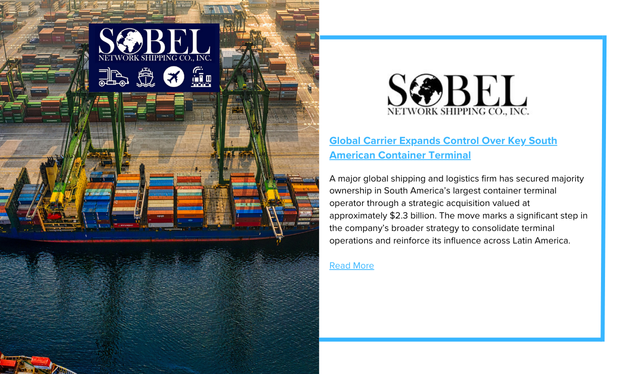A major global shipping and logistics firm has secured majority ownership in South America’s largest container terminal operator through a strategic acquisition valued at approximately $2.3 billion. The move marks a significant step in the company’s broader strategy to consolidate terminal operations and reinforce its influence across Latin America.
The acquisition was finalized following regulatory approval of a $1 billion transaction to purchase nearly 48% of the terminal operator’s shares from an investment management group. This, combined with a previously acquired minority stake, brings the company’s total ownership to 51%, granting it majority control.
The terminal in question is located at one of Brazil’s most vital maritime gateways and is a central hub for container movement across the region. Competitor carriers already operate in the same port through separate facilities, but the new controlling stake is expected to allow the acquiring company to better coordinate its regional transshipment and logistics services.
Plans are in place to extend a public offer for the remaining 49% of outstanding shares. The final price and acceptance of the offer will depend on an upcoming shareholder vote and an independent valuation to determine the minimum share price. Once full ownership is achieved, the operator may be delisted from the stock exchange.
The terminal boasts a current handling capacity of 2.5 million TEUs, with expansion to 3 million TEUs already underway. It features three berths capable of accommodating vessels up to 14,000 TEUs and accounts for approximately 16% of Brazil’s total container traffic. In addition to container services, the terminal group manages vehicle, breakbulk, and liquid cargo operations, as well as logistics services tied to port activity.
Industry observers note that while the full operational implications are yet to be seen, the move signals a clear intent to strengthen regional transshipment capabilities. By taking direct control of terminal infrastructure, shipping lines aim to gain greater flexibility, reduce dependency on third-party services, and optimize the flow of cargo across key trade corridors.
This acquisition is part of a broader trend among global ocean carriers to secure ownership or control over port assets, as seen in other recent deals across Europe, Asia, and the Americas.


